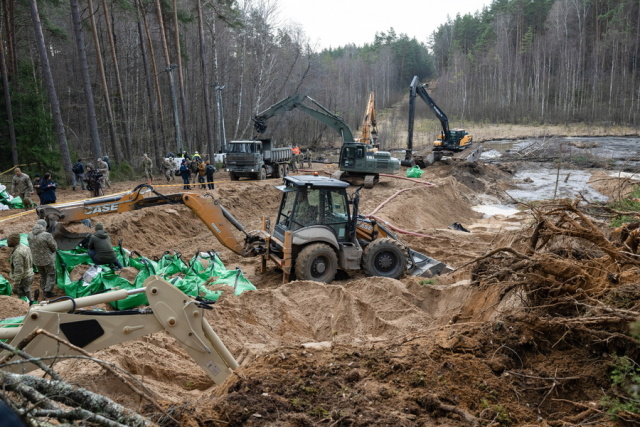A powerful wave of severe weather has swept across Greece, bringing heavy rain, thunderstorms, and hailstorms that have wreaked havoc in several regions, particularly the Cyclades, Peloponnese, and Central Greece.
Experts warn that this stormy week could cause widespread disruptions, with Attica, the region surrounding Athens, bracing for its turn as the weather system progresses.

Devastation in the Cyclades
The storm made its dramatic entrance on the island of Paros, where torrential rain turned the area of Naoussa into a scene of chaos. Rushing waters transformed streets into rivers, sweeping away cars and causing significant damage. The intense downpour, lasting several hours, triggered landslides that disrupted the island’s road network. Paros Mayor Kostas Bizas, speaking on ANT1’s main news bulletin, confirmed the severity of the situation: “The rain started around 3 p.m. and hasn’t let up. We’ve had drivers trapped on roads near Lefkes and the Parikia-Naoussa axis. Videos are circulating showing tons of water dragging cars into the Naoussa river toward the bridge by the sea.” In response, schools on Paros will remain closed on Tuesday, and a message from Greece’s 112 emergency service has banned vehicle movement on the island’s roads, except for emergency vehicles.
Mykonos faced similar turmoil, with its iconic Chora district flooding under an onslaught of rain. The National Observatory of Athens recorded an astonishing 71.6 millimeters of rainfall on the island by 8:20 p.m., with 65 millimeters falling in just two hours between 5:10 p.m. and 7:10 p.m. Schools on Mykonos, as well as Rhodes and Symi, will also close on Tuesday as a precautionary measure, with the storm expected to shift toward the southeastern Aegean. Meanwhile, Syros experienced heavy hail, adding to the region’s woes.

Widespread Impact Across Greece
The storm’s reach extended beyond the islands. On the Corinth-Tripoli National Highway near Ancient Nemea, a fierce hailstorm blanketed the road in white within minutes. In Livadeia, Central Greece, and on islands like Thasos, Tinos, and Skopelos, massive volumes of water overwhelmed local infrastructure. Flooding and landslides have left communities struggling to cope.

What’s Next: Attica on Alert
Meteorologists predict that the unstable weather will persist across much of Greece, including the Ionian Islands, mainland regions, Macedonia, Thrace, and the Aegean. In Attica, rain is expected to intensify overnight into Tuesday, with temperatures ranging from 12°C to 19°C.
Thessaloniki will see showers and localised thunderstorms, with temperatures between 10°C and 17°C. The National Meteorological Service (EMY) has issued an updated Emergency Weather Bulletin, forecasting locally severe rain and thunderstorms from Monday afternoon through Wednesday morning in eastern Greece, including Attica, the Cyclades, eastern Central Greece, Evia, Thessaly, the Sporades, and the Dodecanese.
Authorities Respond
Emergency services are on high alert. The Fire Service has received dozens of calls for water pumping, though operations will commence only after the rainfall subsides. Reinforcements are en route to Paros from Athens and Naxos to assist with recovery efforts. The Municipality of Paros has urged residents and visitors to avoid roads due to the extensive damage and ongoing danger, emphasizing that the local government is working tirelessly with authorities to manage the crisis.
As Greece braces for more stormy weather, residents and international visitors alike are advised to heed official warnings and stay informed. With Attica next in the storm’s path, the coming hours will test the nation’s resilience against nature’s fury.

